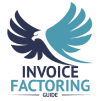
Is low sales turnover trapping your business in a cycle of stagnation? When sales turnover rates are low, it can feel like your business is constantly stuck in neutral. Slow-moving inventory and delayed cash flow prevent you from investing in the growth initiatives that could turn things around, creating a frustrating loop of underperformance. But what if there was a way to break this cycle and put your business on a path to consistent growth? This page will explore the impact of sales turnover on your business, proven strategies to improve it, and how factoring could be the key to unlocking your company’s full potential.
Sales Turnover Basics
Sales turnover is a fundamental concept in business that refers to the total revenue generated from the sale of goods or services over a specific period. It’s a measure of how quickly a company is selling its inventory or how effectively it’s generating sales.
What Sales Turnover Means
Sales turnover is often used as an indicator of a company’s performance and efficiency. High sales turnover typically suggests that a business is selling its products or services quickly, which is a positive sign of demand and operational effectiveness. On the other hand, low sales turnover might indicate that a company is struggling to move its products, potentially due to pricing, market competition, or other factors.
Sales Turnover vs. Inventory Turnover
While sales turnover and inventory turnover are both crucial metrics for gauging a company’s performance, they serve different purposes and provide insights into distinct aspects of business operations.
Sales Turnover focuses on the total revenue generated from sales over a specific period. It tells us how effectively a company is converting its products or services into sales. Essentially, it measures the speed and success of sales efforts, reflecting how well the company is meeting market demand.
Inventory Turnover, on the other hand, is concerned with how efficiently a company is managing its stock. It calculates how many times a company sells and replaces its inventory within a given timeframe. A high inventory turnover indicates that a company is effectively managing its stock levels and quickly moving products, which is a good sign of demand and efficient operations. Conversely, low inventory turnover might suggest overstocking or slow-moving products, tying up capital in unsold goods.
Sales Turnover Rate Basics
The sales turnover rate is a metric that provides insight into how quickly a company generates revenue relative to its total sales or inventory. It’s essentially a ratio that shows the speed at which sales are occurring over a given period, offering a more dynamic view of sales performance than just the total sales turnover alone.
How to Calculate Sales Turnover Rate
Calculating the sales turnover rate involves comparing the sales turnover to either the total inventory or another relevant measure, depending on the context. The most common way to calculate it is by dividing the sales turnover by the average inventory.
Here’s the basic formula:
Sales Turnover Rate = Sales Turnover ÷ Average Inventory
Example of a Sales Turnover Rate Calculation
Let’s break this down with an example:
- Sales Turnover: If a company has a sales turnover of $1 million over a year, this is the total revenue generated from sales during that period.
- Average Inventory: Let’s say the average inventory for the year is $250,000. Average inventory is typically calculated by taking the sum of the inventory levels at the beginning and end of the period and dividing by two.
Now, applying the formula:
4 = $1,000,000 ÷ $250,000
This means that for every dollar of inventory, the company generates $4 in sales over the course of the year.
Why is the Sales Turnover Rate Important?
The sales turnover rate provides valuable insights into how efficiently a company is converting its inventory into sales. A higher turnover rate indicates that the company is selling products quickly, which is often a sign of strong demand and efficient operations. Conversely, a lower turnover rate might suggest that inventory is moving slowly, potentially tying up capital that could be used elsewhere.
For instance, in industries like fashion or technology, where products can become obsolete quickly, a high sales turnover rate is crucial to staying competitive. On the other hand, industries with longer product life cycles may have lower turnover rates, but they still need to monitor this metric to ensure efficient inventory management.
By understanding and optimizing the sales turnover rate, businesses can better manage inventory, improve cash flow, and make informed decisions about production, pricing, and sales strategies.
Proven Tactics to Improve Your Sales Turnover Rate

Improving your sales turnover rate is essential for maintaining a healthy cash flow and driving business growth. By focusing on strategies that enhance sales efficiency and customer satisfaction, businesses can increase the speed at which they convert inventory into revenue. Below, we explore several proven tactics to help you boost your sales turnover rate.
Optimize Pricing Strategy
One of the most direct ways to improve sales turnover is by adjusting your pricing strategy. This could involve offering competitive pricing, bundling products, or providing discounts to encourage quicker purchases. For instance, limited-time offers or seasonal discounts can create a sense of urgency, prompting customers to buy now rather than later.
Enhance Marketing Efforts
A targeted marketing campaign can significantly boost sales turnover by reaching the right audience with the right message. Whether through digital marketing, social media ads, or email campaigns, effective marketing can increase visibility, attract new customers, and drive higher sales volumes. Consider using data analytics to refine your campaigns and focus on high-conversion channels.
Improve Product Quality
Ensuring that your products meet or exceed customer expectations can lead to higher sales turnover. Quality products not only attract new customers but also encourage repeat purchases and positive word-of-mouth referrals. Regularly seek customer feedback and invest in product improvements to maintain high standards and customer loyalty.
Streamline Inventory Management
Efficient inventory management is key to improving sales turnover. By maintaining optimal inventory levels—neither too high nor too low—you can reduce holding costs and prevent stockouts or overstocking. Tools like inventory management software can help you monitor stock levels in real-time and reorder products before they run out.
Shorten Sales Cycles
Reducing the time it takes to close a sale can directly improve your sales turnover rate. This can be achieved by streamlining the purchasing process, offering incentives for quick decisions, or simplifying the customer journey. For example, providing easy financing options or reducing the steps required to complete a purchase can help speed up the sales process.
Diversify Product Offerings
Expanding your product line with complementary or seasonal items can increase sales opportunities and turnover. By offering products that meet a variety of customer needs, you can encourage cross-selling and upselling. For instance, a clothing retailer might introduce accessories or seasonal apparel to complement their main product line, boosting overall sales.
Leverage Technology
Using technology to analyze sales data and customer behavior can help you identify trends and opportunities for improvement. CRM systems, for example, can track customer interactions and preferences, allowing you to tailor your sales approach more effectively. Additionally, e-commerce platforms with integrated analytics can provide insights into which products are selling fastest, helping you adjust your strategy accordingly.
Enhance Customer Service
Great customer service can significantly impact your sales turnover rate by fostering customer loyalty and repeat business. By providing prompt, helpful, and personalized service, you can improve the overall buying experience, making customers more likely to return. Additionally, training your sales team to handle objections and close deals efficiently can also contribute to faster sales cycles.
Expand Sales Channels
Reaching new customers through additional sales channels can increase your sales turnover. Consider expanding your presence to online marketplaces, social media platforms, or even partnering with other businesses to tap into new markets. Each new channel provides an opportunity to attract more customers and increase sales volume.
Review and Revise Sales Tactics
Continuously reviewing and refining your sales tactics is essential for staying competitive and improving sales turnover. Regularly analyze sales data to identify what’s working and what isn’t, and be willing to adapt your approach as needed. This could involve changing your sales pitch, adjusting your target audience, or exploring new sales strategies.
Unlocking Your Sales Turnover Potential with Factoring
Factoring is a financial tool that can unlock the potential of your business by providing immediate access to cash tied up in unpaid invoices. This allows you to maintain smooth operations, invest in growth, and improve your sales turnover and sales turnover rates.
How Factoring Works
Factoring is a straightforward process where a business sells its outstanding invoices (accounts receivable) to a third party, known as a factor, at a discount. Here’s how it typically works:
- Invoice Generation: After delivering goods or services, your business issues an invoice to the customer with payment terms, often 30, 60, or 90 days.
- Selling Invoices: Instead of waiting for the customer to pay, you sell the invoice to a factoring company. The factor typically advances you a large portion of the invoice value—often 60 to 95 percent—immediately.
- Customer Payment: The customer pays the invoice directly to the factoring company when it’s due.
- Final Payment: Once the customer pays, the factor releases the remaining balance of the invoice value to your business, minus a small fee for the service.
By converting your receivables into cash quickly, factoring allows you to access working capital without waiting for customer payments.
How Factoring Can Improve Sales Turnover and Sales Turnover Rates

Now that we’ve covered the background, let’s take a deeper look at how factoring boosts sales turnover.
Immediate Cash Flow
Factoring provides immediate access to cash that would otherwise be tied up in unpaid invoices. This influx of working capital allows your business to reinvest in operations, purchase more inventory, and fulfill additional orders quickly. As a result, you can increase your sales turnover by continuously generating revenue without delays.
Accelerated Sales Cycles
With the cash flow provided by factoring, you can shorten sales cycles by quickly replenishing inventory and fulfilling orders faster. This means you can turn over your inventory more rapidly, leading to a higher sales turnover rate. Instead of waiting for customer payments to fund new orders, factoring ensures that you always have the cash on hand to keep sales flowing.
Enhanced Ability to Offer Competitive Terms
Factoring allows you to offer more competitive payment terms to your customers (such as net 30 or net 60), knowing that you won’t have to wait for the full payment period to receive cash. This can attract more customers and lead to increased sales, boosting your overall sales turnover.
Improved Inventory Management
With a steady cash flow from factoring, you can better manage your inventory levels, avoiding stockouts or overstocking. Efficient inventory management means you can keep products moving quickly, further increasing your sales turnover rate. Businesses in the manufacturing sector can leverage factoring to streamline operations, maintain steady production, and enhance their cash flow management. Learn more about invoice factoring for manufacturing businesses.
Focus on Growth and Expansion
By freeing up capital that’s typically tied up in receivables, factoring allows you to invest in growth opportunities, such as expanding into new markets, launching marketing campaigns, or upgrading equipment. These investments can drive higher sales, contributing to an improved sales turnover rate. Plus, factoring companies often take care of back-office tasks like collections, giving you more time to focus on business growth.
Unlock Your Sales Turnover Potential with Factoring
Factoring not only provides the cash flow needed to sustain and grow your business but also helps improve sales turnover and sales turnover rates by accelerating the sales process and enabling more efficient operations. By unlocking the potential of your receivables, factoring can be a key driver of business success. If you’re ready to improve your sales turnover through factoring, request a complimentary rate quote now.
Factoring & Sales Turnover FAQs
How can I calculate my company’s sales turnover rate?
The sales turnover rate is calculated by dividing your company’s total sales turnover by the average inventory for the same period. The formula is:
Sales Turnover Rate = Sales Turnover ÷ Average Inventory
For example, if your total sales turnover is $1 million and your average inventory is $250,000, your sales turnover rate would be 4. This means that your business generates $4 in sales for every $1 of inventory. The sales turnover rate is a valuable metric because it shows how efficiently a company is converting its inventory into sales, indicating both sales performance and inventory management efficiency.
What are some effective strategies to improve sales turnover?
Improving sales turnover involves several strategies:
- Optimize Pricing: Adjust pricing to attract more customers and encourage quicker purchases.
- Enhance Marketing: Use targeted campaigns to increase visibility and sales volume.
- Improve Product Quality: High-quality products drive repeat purchases and positive referrals.
- Streamline Inventory Management: Maintain optimal inventory levels to avoid stockouts or overstocking.
- Shorten Sales Cycles: Simplify and accelerate the purchasing process.
- Diversify Product Offerings: Offer complementary products to boost cross-selling and upselling.
- Leverage Technology: Use CRM and data analytics to refine sales strategies.
- Expand Sales Channels: Reach more customers through online marketplaces and partnerships.
These strategies collectively help increase sales turnover by driving more sales and improving operational efficiency.
How does inventory turnover impact sales turnover?
Inventory turnover is a critical factor that directly impacts sales turnover. A high inventory turnover indicates that a company is efficiently selling and replenishing its inventory, which often correlates with higher sales turnover. When inventory moves quickly, it means that products are in demand and sales are happening more frequently, contributing to a higher sales turnover rate. Conversely, low inventory turnover might indicate overstocking or slow-moving products, which can tie up capital and slow down sales turnover. Efficient inventory management, therefore, plays a key role in maintaining a healthy sales turnover rate by ensuring that stock levels align with sales demand.
Can factoring help improve my sales turnover rate?
Yes, factoring can significantly improve your sales turnover rate by providing immediate cash flow from outstanding invoices. When you factor your receivables, you receive a large portion of the invoice value upfront, which you can then reinvest in your business to purchase more inventory, fulfill additional orders, and accelerate your sales cycle. This continuous flow of cash allows you to turn over your inventory more quickly, resulting in a higher sales turnover rate. Additionally, by having the cash on hand, you can offer competitive payment terms to customers, attract more business, and further boost your sales turnover.
How does factoring affect cash flow and business growth?
Factoring positively impacts cash flow by providing immediate access to funds tied up in unpaid invoices. This boost in cash flow allows businesses to cover operational expenses, pay suppliers on time, and take on new orders without delay. By improving cash flow, factoring enables businesses to reinvest in growth opportunities, such as expanding their product line, entering new markets, or increasing marketing efforts. Additionally, with a reliable source of cash flow, businesses can operate more efficiently, reduce the need for short-term loans, and strengthen their financial stability. Ultimately, factoring supports sustained business growth by ensuring that cash flow remains consistent and predictable.
Is factoring a good option for improving sales performance?
Factoring can be an excellent option for improving sales performance, particularly for businesses that struggle with cash flow due to long payment terms. By converting receivables into immediate cash, factoring provides the working capital needed to invest in inventory, fulfill more orders, and execute sales strategies without delay. This immediate access to funds allows businesses to shorten their sales cycles, offer more competitive terms to customers, and take advantage of growth opportunities as they arise. For businesses in industries with extended payment cycles, factoring not only supports ongoing operations but also enhances the ability to generate more sales and improve overall sales performance.
What are the benefits of factoring for sales turnover?
Factoring provides several key benefits that directly enhance sales turnover. By converting unpaid invoices into immediate cash, factoring allows businesses to maintain a steady cash flow, which is critical for funding operations, purchasing inventory, and fulfilling orders without delays. This accelerated access to working capital enables companies to reduce sales cycles, increase inventory turnover, and meet customer demand more efficiently. Additionally, factoring allows businesses to offer more competitive payment terms to customers, attracting more sales and driving revenue growth. Overall, factoring helps businesses keep sales momentum strong, allowing for continuous sales activity and improving the rate at which sales turnover occurs, ultimately leading to more robust financial performance and business growth.

About Invoice Factoring Guide
Related Articles
Get an instant funding estimate
Results are estimates based on the calculated rate and the total invoice amount provided.
Actual rates may vary.
Request a Factoring Rate Quote
PREFER TO TALK? Call us at 1-844-887-0300










